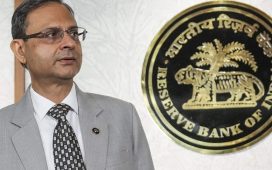“GST collection crosses ₹2 lakh crore benchmark, thanks to the strong momentum in the economy and efficient tax collections,” finance minister Nirmala Sitharaman posted on X, formerly Twitter. GST collection rose 12.4% in April from ₹1.87 lakh crore a year earlier on the back of a 13% rise in domestic transactions that point to healthy local demand. The previous monthly record was ₹1.87 lakh crore in April 2023.
India’s economy is estimated to have grown 7.6% in FY24. The IMF expects India’s GDP to expand 6.8% in FY25, retaining its status as the world’s fastest-growing major economy. Total GST collection was ₹1.78 lakh crore in March while the monthly average for FY24 was ₹1.68 lakh crore.
Experts said the sustained high growth augured well for reform of GST, including changes in the slabs that may entail some revenue loss. “It may also enable the government to take bolder decisions such as rate rationalisation or bringing products such as ATF (aviation turbine fuel) and natural gas under the GST ambit,” said Partik Jain, partner, PwC India. “It’s particularly encouraging to see that growth is largely led by domestic consumption.”
The current GST regime is regarded as being too complex due to multiple rates as well exemptions, leading to disputes and making compliance onerous. The GST Council recognises that “rate rationalisation is one of the very important things”, Sitharaman told ET in an interview last month.

Consistent growth across states
“Equally, to clean up the system, which for some reason got muddled in some areas, in some sections on the input tax credit, duty inversion… all that,” she said.Net collection after refunds was ₹1.92 lakh crore, up 15.5% from April last year. There was consistent growth across states and in the components of the tax.
“Significant collection increases have also been observed across all major producing and consuming states indicating that it is widespread and not restricted to a few industrial pockets,” said MS Mani, partner, Deloitte India.
Experts also noted that increased compliance has led to higher revenue.
“The concerted efforts of the GST officials including zero tolerance for non-filers, coupled with rigorous measures to combat fake invoicing and the registrations has significantly bolstered GST collections in the state’s coffers,” said Saurabh Agarwal, tax partner, EY.
They also attributed the jump to financial year-end adjustments.
“Another significant reason for this growth could be linked to deadline for GST audits and corresponding notices issued during this year,” said Abhishek Jain, partner and national head, indirect tax, KPMG in India.
Of the total, central GST (CGST) was ₹43,846 crore, state GST (SGST) was ₹53,538 crore and integrated GST (IGST) was ₹99,623 crore, including ₹37,826 crore collected on imported goods. The total GST cess collected was ₹13,260 crore, including ₹1,008 crore on imports. The central government settled ₹50,307 crore toward CGST and ₹41,600 crore toward SGST from the IGST collected. This translates to a total revenue of ₹94,153 crore for CGST and ₹95,138 crore for SGST for April after regular settlement.









